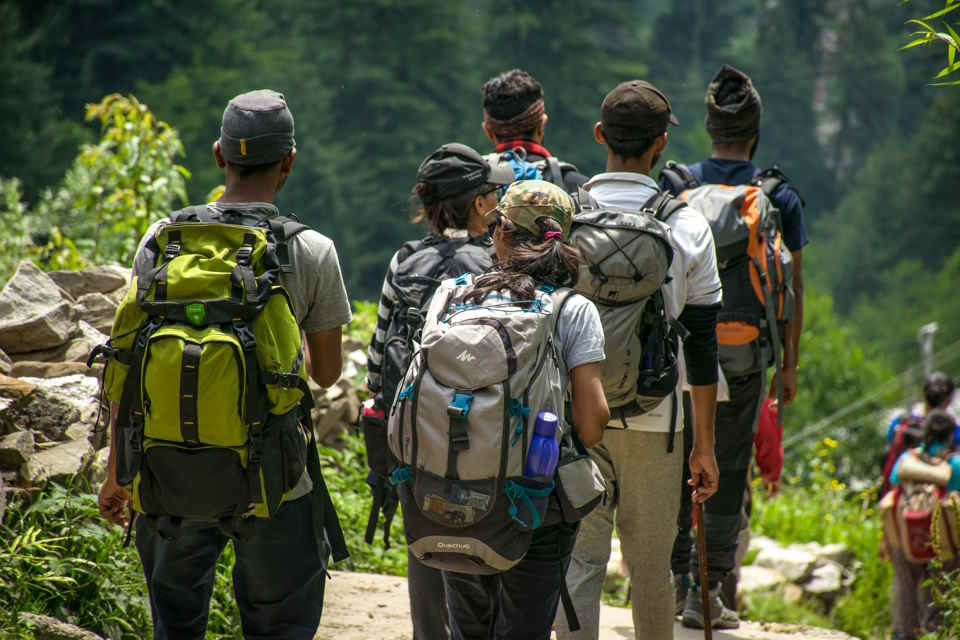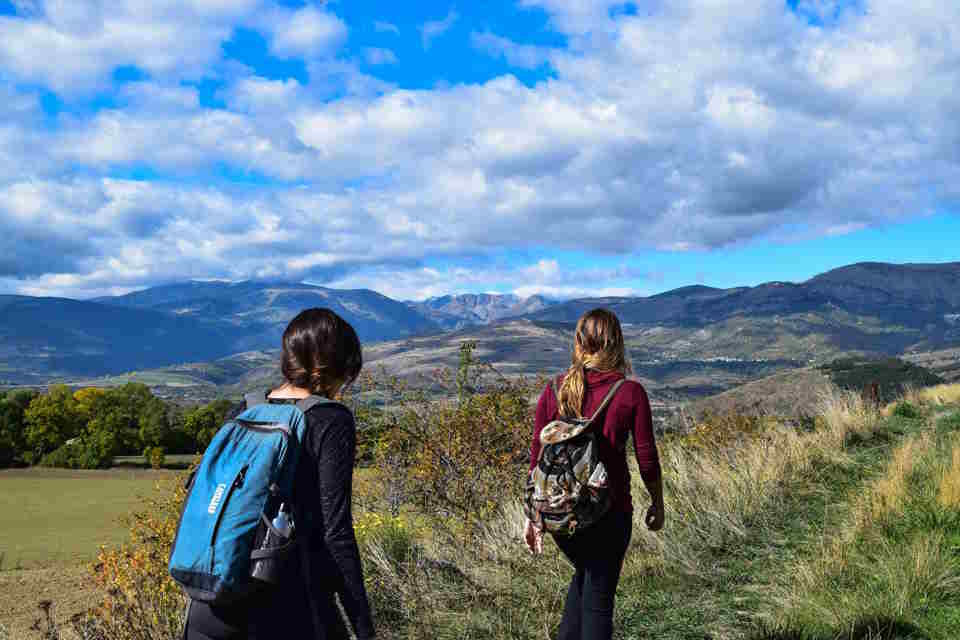Are you ready to hit the trails and explore the great outdoors? Hiking and trekking are fantastic ways to connect with nature and challenge yourself physically and mentally. However, to ensure a successful and enjoyable adventure, it’s essential to know the do’s and don’ts of hiking and trekking. From preparing the right gear to setting a realistic pace, there are key elements to consider before embarking on your journey. In this blog post, we’ll explore the essential do’s of hiking and trekking, the importance of preparing the right gear, the essential supplies to pack, how to set a realistic pace, and the significance of following leave no trace practices. Whether you’re a seasoned hiker or new to the trekking world, these tips will help you make the most of your outdoor experience while minimizing environmental impact. Let’s lace up our boots and dive into the do’s and don’ts of hiking and trekking!Get expert tips on hiking and trekking do’s, preparing gear and essential supplies, setting pace, and Leave No Trace practices for a great outdoor adventure.
The Do’s Of Hiking And Trekking
When embarking on a hiking or trekking adventure, it’s important to be mindful of certain do’s that can make your experience safer and more enjoyable. One key do is to always inform someone of your plans before hitting the trail. This ensures that someone knows where you are and when to expect you back, which can be crucial in the event of an emergency. Another important do is to research the trail and terrain before starting your hike. Understanding the difficulty level and length of the trail will help you better prepare and set a realistic pace for your journey.
It’s also essential to pack the right gear for your adventure. This means having proper footwear, clothing, and equipment for the specific terrain and weather conditions. Additionally, bringing along essential supplies such as water, snacks, navigation tools, and first aid kits is a must. These items can help keep you safe and comfortable throughout your hike.
Setting a realistic pace is another crucial do when it comes to hiking and trekking. It’s important to listen to your body and take breaks when needed, especially during uphill climbs or in extreme weather conditions. Pushing yourself too hard can lead to exhaustion and injury, so it’s important to pace yourself accordingly.
Lastly, following Leave No Trace practices is a non-negotiable do when exploring nature. This means respecting the environment and leaving no impact behind. Always carry out what you carry in, stay on designated trails, and avoid disturbing wildlife. By practicing Leave No Trace principles, you can help preserve the natural beauty of the outdoors for future generations to enjoy.
Preparing The Right Gear
When you’re getting ready for a hiking or trekking adventure, preparing the right gear is crucial for a successful and enjoyable experience. Having the proper equipment can make a significant difference in your comfort, safety, and overall satisfaction. One of the most essential pieces of gear for any hiker or trekker is a sturdy and comfortable pair of hiking boots or shoes. These should provide excellent support, traction, and protection for your feet and ankles, especially if you’ll be walking over rugged or uneven terrain for an extended period of time.
In addition to your footwear, preparing the right gear also includes choosing appropriate clothing for the conditions you’ll be facing. This may involve lightweight, moisture-wicking layers that can be easily adjusted as needed, such as a breathable base layer, insulating mid-layer, and water-resistant outer shell. It’s important to consider the weather, temperature, and time of year when selecting your clothing, and don’t forget about accessories like a hat, gloves, and sunglasses to shield you from the elements.
Another key aspect of preparing the right gear is ensuring that you have all the necessary supplies and equipment for your specific adventure. This may include a reliable backpack, trekking poles, a first aid kit, a map and compass or GPS device, and any specialized gear for activities like camping, rock climbing, or wildlife viewing. It’s essential to carefully evaluate the requirements of your trip and pack accordingly, taking into account your personal preferences and limitations.
Lastly, preparing the right gear means being mindful of the weight and bulk of your equipment. While it’s important to have everything you need for a safe and comfortable journey, you also don’t want to be burdened by an excessively heavy or awkwardly packed load. Strive to strike a balance between being prepared and being practical, and remember that you can always adjust and refine your gear selection based on your experiences and feedback from other outdoor enthusiasts.
Packing Essential Supplies
When preparing for a hiking or trekking trip, packing essential supplies is crucial to ensure a safe and enjoyable experience. Without the necessary items, you may find yourself in a difficult situation, unprepared for the challenges of the great outdoors. It’s important to carefully consider the specific needs of your trip and pack accordingly to ensure your safety and comfort.
First and foremost, water is the most essential supply to have on any hiking or trekking adventure. Staying hydrated is key to maintaining your energy and avoiding dehydration, so be sure to bring an adequate supply of clean water or water purification tools. Additionally, consider packing lightweight, high-energy snacks to keep your energy levels up throughout your journey.
Another crucial supply to include in your pack is a first aid kit. Accidents can happen while hiking, and having essential medical supplies on hand can make all the difference in an emergency situation. Be sure to pack items such as bandages, antiseptic ointment, pain relievers, and any necessary personal medications.
In addition to water and first aid supplies, it’s important to pack appropriate clothing for the conditions you’ll be facing. This may include moisture-wicking layers, a waterproof jacket, and extra socks. Always consider the potential for changing weather and be prepared with the right clothing to keep you comfortable and safe.
Setting A Realistic Pace
When embarking on a hiking or trekking adventure, it’s important to set a realistic pace to ensure an enjoyable and successful journey. One of the biggest mistakes that hikers make is starting off too fast, only to burn out quickly and struggle to keep up the momentum. Therefore, it’s essential to assess your fitness level and the difficulty of the terrain, and then establish a comfortable pace that allows you to keep moving steadily without overexerting yourself.
By setting a realistic pace, you can avoid fatigue, prevent injuries, and increase your chances of reaching your destination in good time. It’s crucial to find a balance between pushing yourself and conserving energy, especially on longer hikes or treks. Taking regular breaks, staying hydrated, and listening to your body are all important factors in maintaining a steady and sustainable pace.
Additionally, consider the overall duration of your hike and plan your pace accordingly. Trying to maintain a quick pace for an extended period can be taxing, so it’s beneficial to divide the journey into manageable segments and pace yourself accordingly. This approach allows for efficient progress while minimizing the risk of exhaustion.
Ultimately, setting a realistic pace is about finding a rhythm that suits your individual abilities and the demands of the trail. By doing so, you can enhance your overall hiking experience and ensure that you reach your destination feeling strong and accomplished.
Following Leave No Trace Practices
When embarking on a hike or trek, it is essential to prioritize the importance of Leave No Trace practices. These principles are designed to minimize the impact on the environment and ensure that natural areas remain unspoiled for future generations to enjoy. One of the key aspects of following Leave No Trace practices is to refrain from leaving any litter or waste behind. This means packing out all trash, including food wrappers, empty water bottles, and any other non-biodegradable items. By doing so, you are respecting the natural environment and preserving it for others to savor.
Additionally, it is crucial to stay on designated trails and avoid creating new paths or shortcuts. Veering off the established routes can lead to soil erosion, damage to plant life, and disruption of wildlife habitats. Furthermore, it is important to adhere to any posted signage and regulations in the area to ensure that you are minimizing your impact on the landscape. Following these guidelines not only protects the environment, but also enhances the overall experience for yourself and fellow outdoor enthusiasts.
Another vital aspect of Leave No Trace practices is to be mindful of the wildlife and refrain from disturbing or feeding animals. Some species may become reliant on human-provided food, which can alter their natural behavior and jeopardize their well-being. It is essential to observe creatures from a safe distance and refrain from approaching or touching them in their natural habitat. By doing so, you are respecting the wildlife and promoting their survival in the wild.
Ultimately, integrating Leave No Trace practices into your hiking and trekking adventures is essential for preserving the natural beauty of the outdoors. By packing out all trash, staying on designated trails, respecting wildlife, and following regulations, you are contributing to the conservation of these pristine environments. Through these efforts, we can all continue to enjoy the wonders of nature while leaving it unspoiled for future generations to explore and appreciate.









